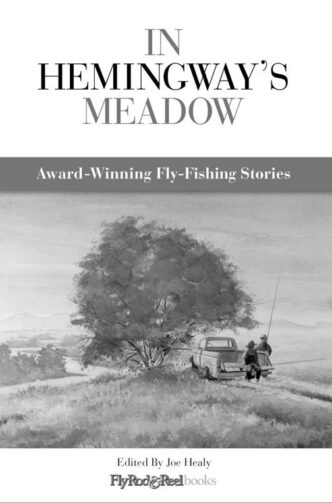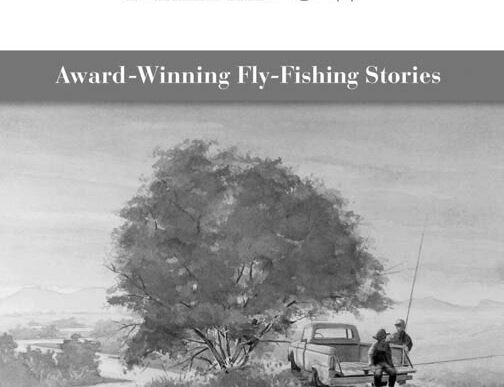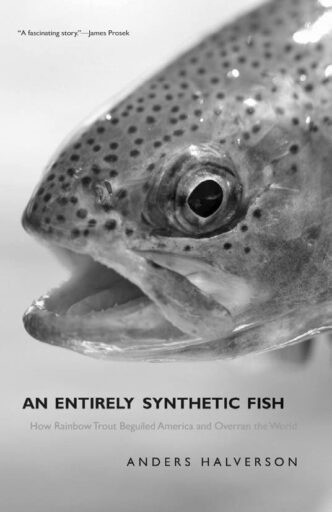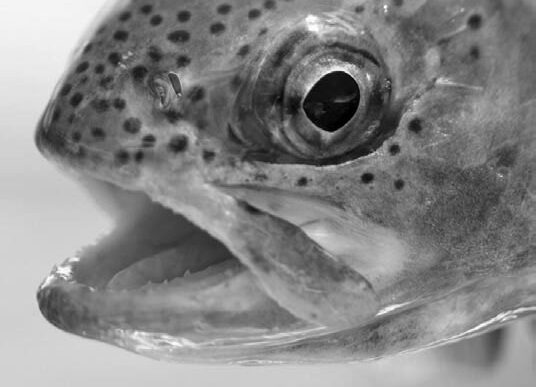To Read
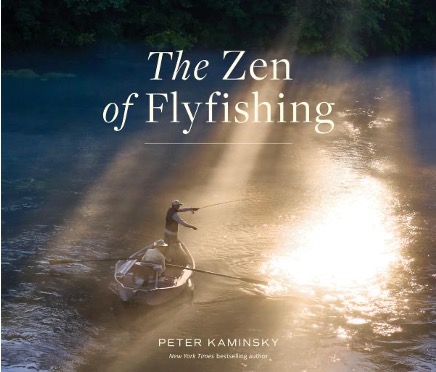
THE ZEN OF FLYFISHING
By Peter Kaminsky
$15, Workman Publishing Company
2025
Reviewed by Sean Stiny
ZEN ON THE WATER
Zen Buddhism affirms firsthand experience over abstract knowledge. Fly fishing rewards getting out on the water rather than staying put. Buddhism encourages awareness of the present moment. Feel the river flow past your waders, regard the aspen on the bank and the swallows swooping at dusk. The ultimate goal of Buddhism is to realize one’s state of awakening and liberation. Sounds like a week away from the office in a river somewhere. Finally, Zen Buddhism explores the interconnectedness of all things. This one goes without saying. “All things merge into one, and a river runs through it.”
The Zen of Flyfishing by Peter Kaminsky explores just that: What makes this oft crazy pursuit a spiritual endeavor rather than an absent-minded hobby, like golf.
“There is a Zen feeling that comes over you when things go right. Your body, rod, line, and fly are united in a transcendent few seconds.”
Fly fishing is a visual medium, to be sure. When I read the words of McGuane or Maclean or Gierach, I picture the stream and the brook and the brown in my noggin. Well, this book is a nice reprieve for my noggin. I have the photo right there on the next page, one of the cast and the landing and the landscape to which the author and the trout are privy.
Kaminsky’s book, in essence, is an anthology, a repertory of sorts. He weaves in personal essays, photos, anecdotes, and quotes to complete this almost pocket-sized book. And none could continually be a more seductive subject for an anthology than fly fishing.
Included are a handful of fly-fishing quotes I hadn’t come across before turning his pages. Quotes from the likes of Virginia Woolf, whose name indeed sounds like a fly pattern, the Royal Woolf (I picture it used in Woolf’s native Great Britain for big browns in the rainy countryside). She wrote:
“Fishing teaches a stern morality; inculcates a remorseless honesty. The fault may be with ourselves. Why do I go on missing at the strike? If I had more delicacy in casting, more accuracy, if I had fished finer, should I have not done better? The answer is—Yes!”
Those rivers I walk and cast a fly upon create magical moments—and not all revolve around catching a fish. Fishing just happens to be the lure that attracts me to them.
Steve Schmidt, guide and outfitter
And my favorite, from guide Justin Carfagnini, in the section about catch and release:
“I went fly fishing. I caught fish. I ate peanut butter M&M’s. Solid day.”
Fishing in the Catskills one Autumn, Kaminsky tells of the trout season ending, but staying on for ruffed grouse and woodcock. His shotgun misfires, and upon opening the break “it turned out that, in my rush, instead of a shell I had jammed in a package of Rolaids.” Sort of like fishing with a gummy worm instead of a nightcrawler.
Comparing fly fishing to Zen Buddhism is somewhat clichéd, but not entirely erroneous. And Kaminsky uses his self-depreciating charm to bring us into the fold. He struggles with casting from time to time, gets broken off by a three-pound brown, contemplates eating a trout once in a while (“Breakfast was the real luxury: an omelet filled with smoked trout cheeks and garnished with minced chives.”), looks longingly at a tarpon or a striper in other parts of the world, and wonders why, after all these years, he’s still so fish crazy.
“There is no why to this; like faith, like love, it requires no proof. It just is—a species of sorcery that transports you out of the workaday world and into the place where dreams and visions arise.”
Appropriately, Kaminsky ends the book with a Nick Lyons quote. “The season is ended. There was not enough of it; there never is.”
Similar to finding a bit of Zen, similar to fly-fishing. But then, there’s always next season.
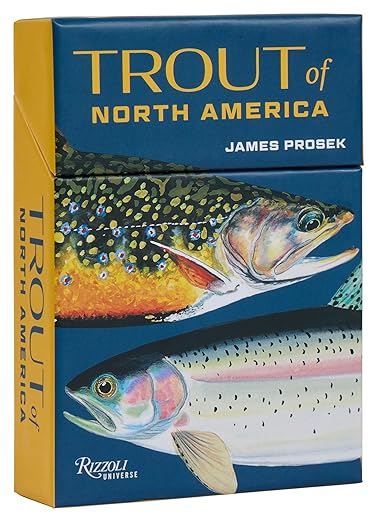
TROUT OF NORTH AMERICA
By James Prosek
$25, Rizzoli Universe
2025
Reviewed by Sean Stiny
I’m getting a PhD in Troutology from UC McCloud, but I desperately need to memorize each trout species and their identifying marks before I present my dissertation at the Ted Fay Fly Shop in Dunsmuir.
My dissertation is titled “The Impact of Beer Consumption on Identifying the Genus Oncorhynchus: A Pilot Study.” The beers, easy to identify. Pabst and Tecate and Coors (genus Yellowjacket). The trout, not so much. I’m sure to fail without the help of James Prosek and his superb collection of trout cards.
Russell Chatham perfected landscapes. Val Atkinson mastered water through lenses. And one of the finest pure trout painters is New Englander James Prosek. His trout are still life, mouths agape, every stripe and dot and shade in its right place. His recent card set, “Trout of North America,” provided flash cards for my beer-pickled brain to help secure my fabricated trout PhD. Cum laude no less.
Facetiousness aside, these cards aren’t homework by any stretch. That little redband you caught in the McCloud, the one that seemed a bit darker along its back, that’s actually a Sheepheaven Creek redband. And the golden trout you caught, the one you finally checked off your bucket list and was so brightly colored you had to squint, that was actually a Volcano Creek golden.
What’s more, that Volcano Creek golden has the scientific name Oncorhynchus aguabonita roosevelti. That’s ‘Trout—Pretty Water—Teddy Roosevelt.’ Yep, that ichthyologist named the species of one golden trout in one pretty little river in California after old Teddy.
Just two of the 60 cards, 60 species, in Prosek’s collection, and I’m already a Troutologist. Trout I could have seen, may have caught, but were oblivious to their exact lineage and details of interest.
Fly fishing and art have always gone hand in hand. A speckled brook trout in a dappled stream, in watercolor. A white peak in the background of a high alpine lake, in oil. A quick pencil sketch of a Hat Creek trout while sitting next to the same riffle from which it just rose to slurp a pale morning dun. The mountains are indeed exquisite, the poplars and spruce are handsome, but it’s the trout that are magic.
Turning over a third card and, say, that’s no fuddy-duddy rainbow caught in salty Eagle Lake near Susanville, that’s the famous Eagle Lake rainbow, adapted for generations to the alkaline lake. It loves its water briny. And that’s not just a cutthroat caught while visiting your in-laws in Scottsdale. That’s the once-endangered, now threatened, Apache trout, named for the tribe in the region who revered it. On the back of its card, Prosek writes:
“In 1871, President Ulysses S. Grant deeded more than 1.6 million acres in the White Mountains of Arizona to the Apache, who regarded this fish as sacred. Other anglers did not share this view, and in the past century, overfishing and hybridization have driven the Apache trout to the brink of extinction.”
Prosek, a writer himself in addition to a painter (his 1997 book Joe and Me is first rate), has most likely painted the most trout species in watercolor in the history of trout. Some are silver, some have the Milky Way on their back, some look like their bellies are aflame, but each is distinct to their region and their ancestry.
Prosek quotes Meriwether Lewis from his journal on the Westslope cutthroat card:
“These trout are from 16 to 23 inches in length, precisely resemble our mountain speckled trout [brook trout] in form and the position of their fins, but the specks on these are of a deep black instead of the red or gold of those common in the United States.”
We have websites now that trace our Homo sapien lineage. The trout have Prosek. He’ll focus on the intricacies of their species and give face and flank to our catch-and-release quarry. The little tail spots, the lower band of red, the irregular angle of the dorsal fin that make each creature unique. Prosek is the Meriwether Lewis of trout species, exploring the unknowns and noting the specialties of what lies in his net.
Of the specific Alaskan rainbow, Prosek writes:
“They depend on salmon runs for food. Other forage items include insects, clams, small fish, voles, and lemmings.”
Voles and lemmings? Sounds like an eagle or an owl and not a damn rainbow trout.
So the next time I tighten a line in a river and expect a homogeneous result of a trout (usually a common rainbow, not that mammal-eating behemoth up north), Prosek proves otherwise. I’ll take a half second longer when cradling the trout to inspect its markings before releasing it back to the cold swift current.
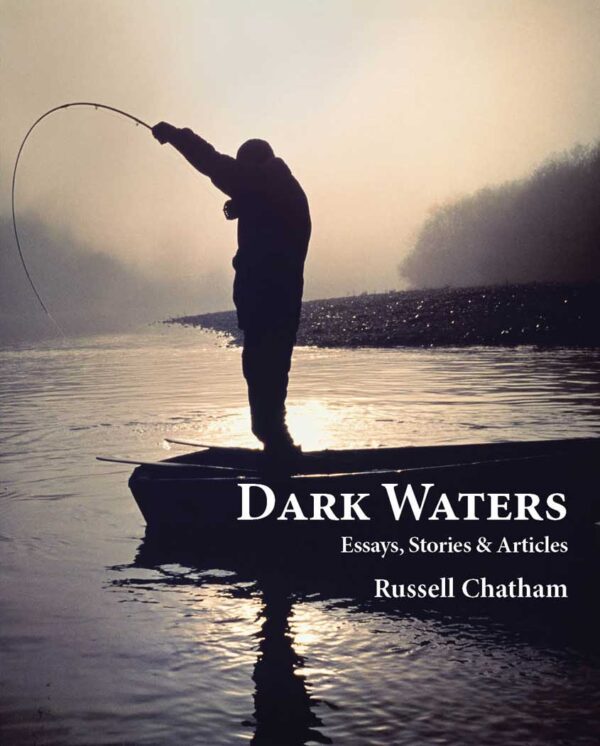
DARK WATERS: ESSAYS, STORIES, & ARTICLES
By Russell Chatham
New Foreward by Terry McDonell
$22, Ice Cube Press
Re-released 2025
Russell Chatham was more than a writer—he was a legend in California fly fishing. With a painter’s eye and an angler’s heart, he captured the soul of wild places and the people drawn to them. In Dark Waters, first published in 1988 and now re-released, Chatham’s evocative prose returns to remind us why his work still resonates.
Richard Anderson, founder of California Fly Fisher, had this to say about the first release of Dark Waters shared in the April 1997 issue,
“With Russell Chatham’s death, we lost a hugely talented individual, someone who was both icon and iconoclast, whose works have had a profound effect on many of us who care about where, why, and how we fish or hunt. The stories and essays collected in Dark Waters remain among the best of sporting literature, and often transcend ‘mere’ sport in how they weave inner life with outer world. If you have not yet read Russ’s writing, you’re in for a treat.”
These essays are steeped in the landscapes and lore of California and the West, offering a rich, contemplative look at fly fishing, solitude, and the quiet drama of nature. For those who know the pull of wild rivers, Dark Waters remains essential reading.







